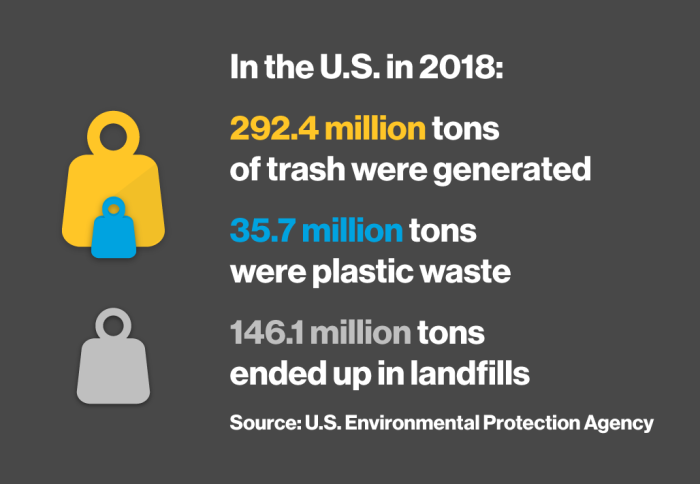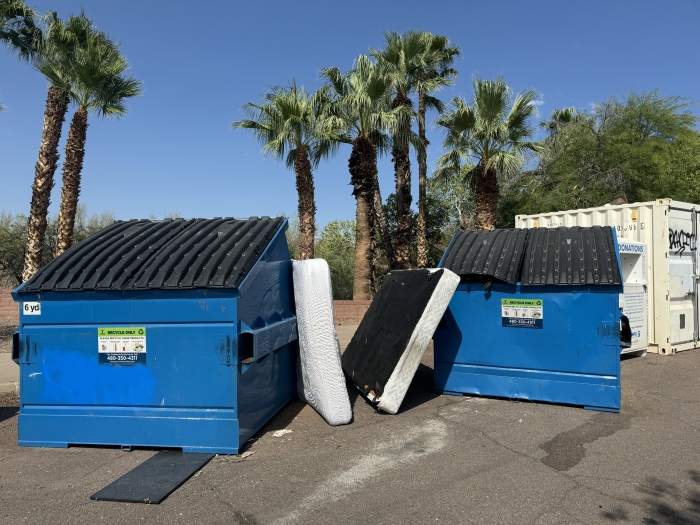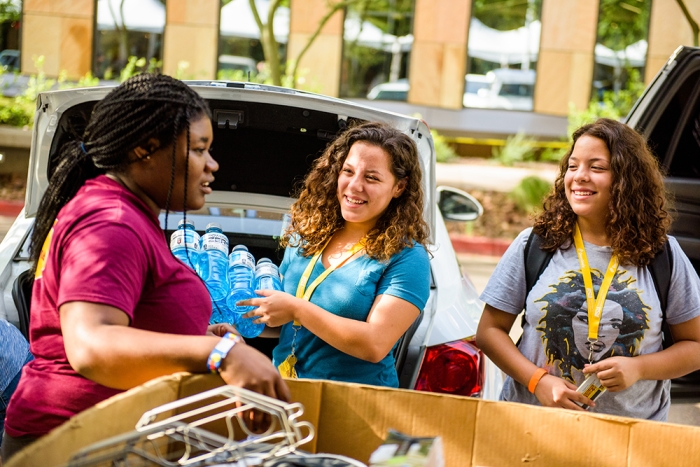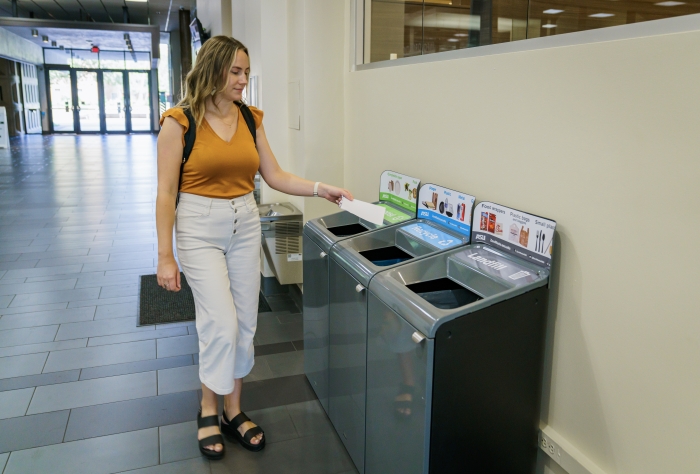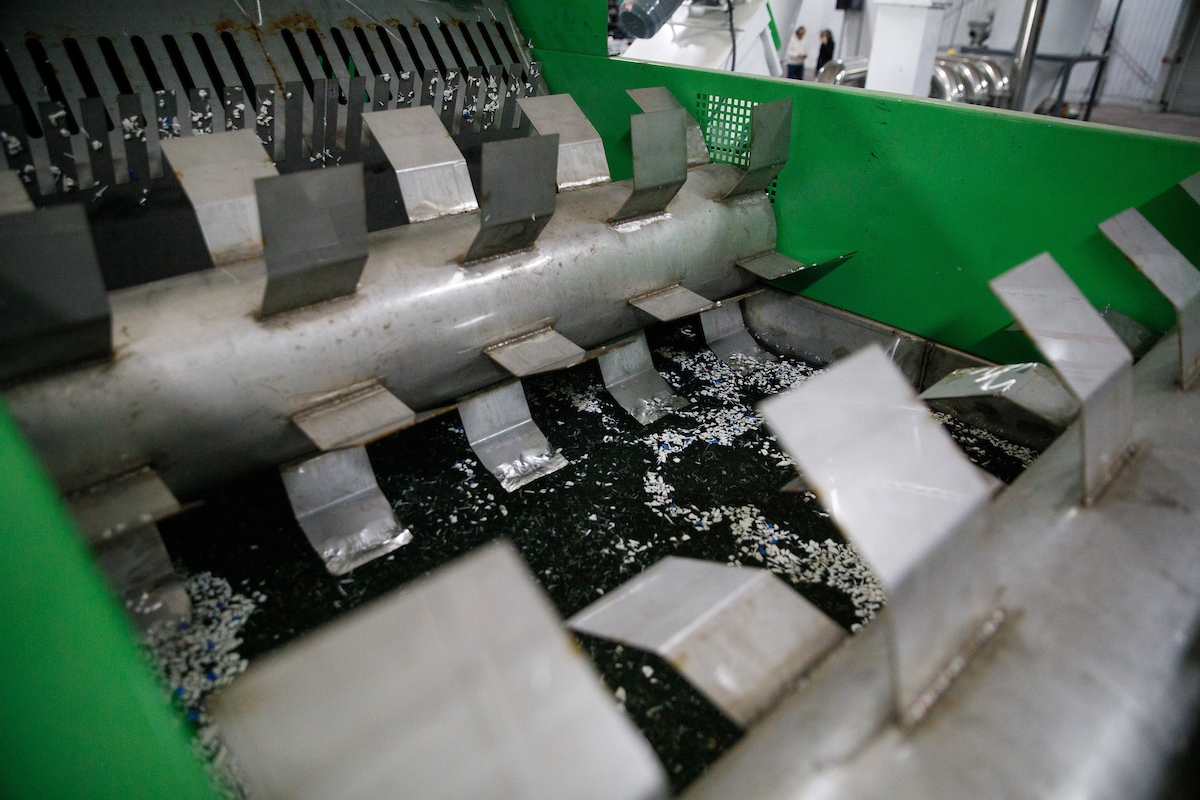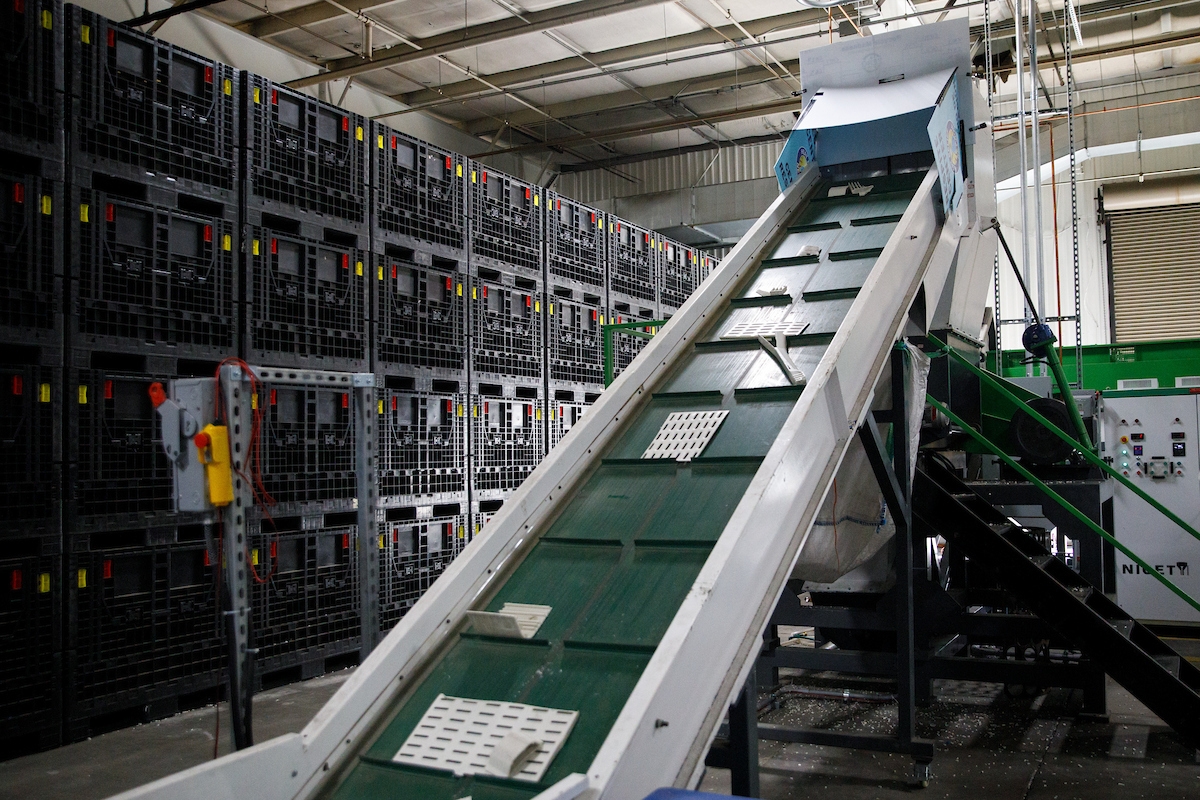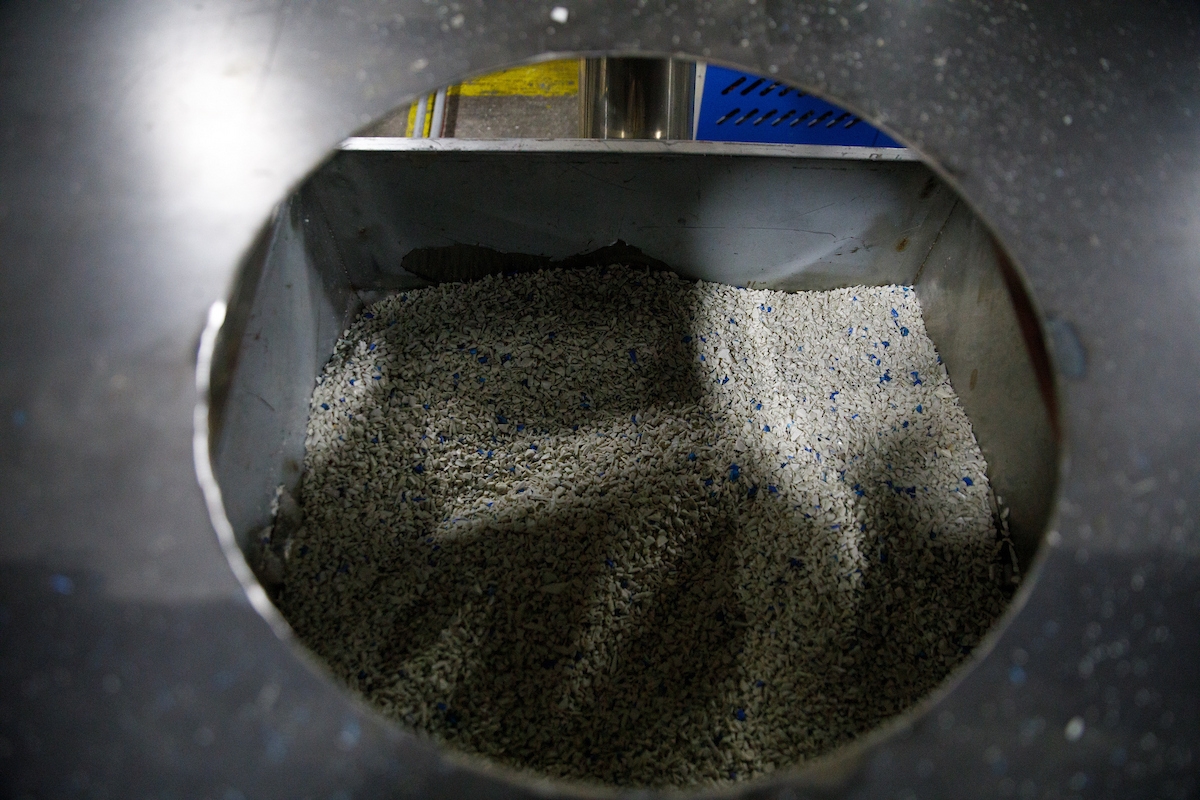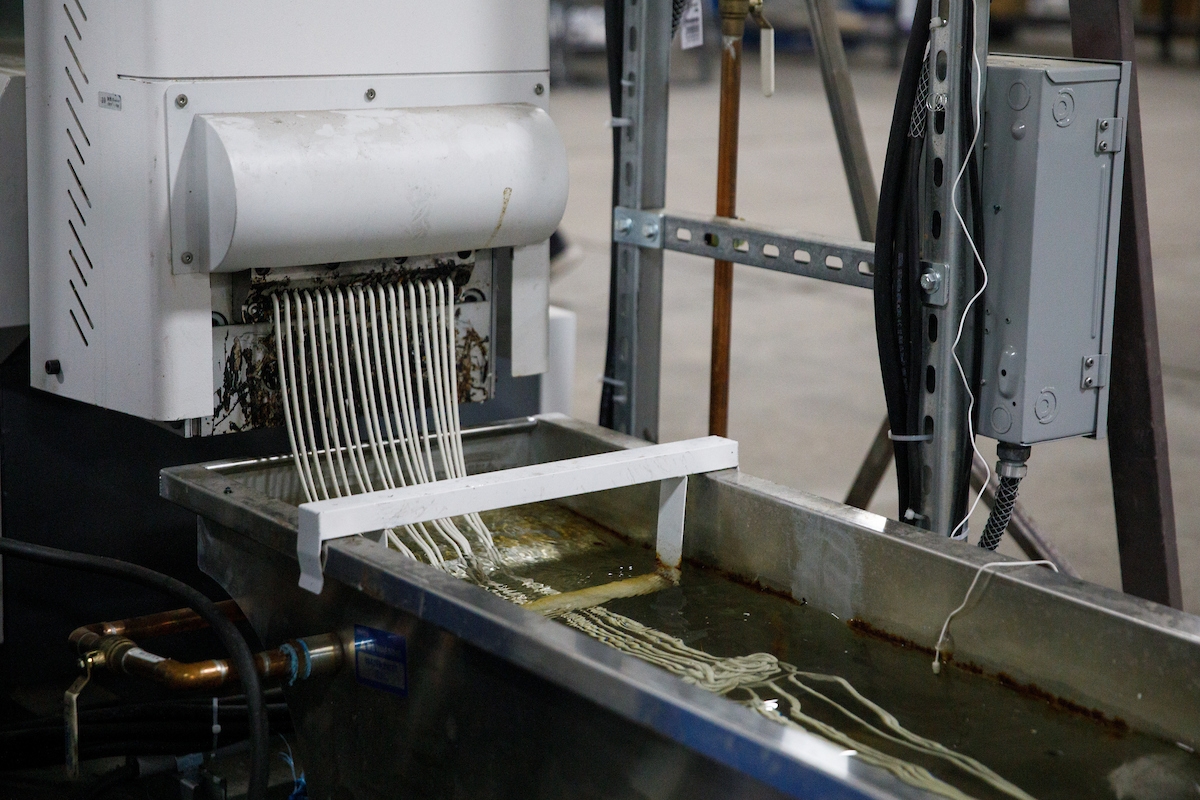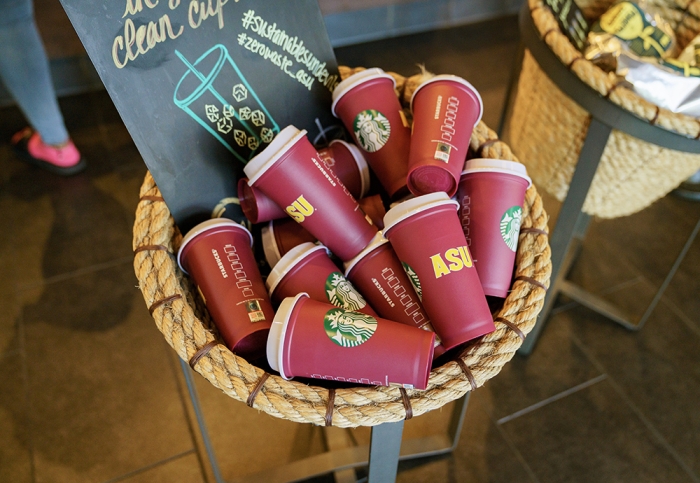A world full of plastic ... not fantastic

Illustration by Christian Van Bebber
Editor’s note: This story is part of a series exploring how ASU tackles complex problems to create a thriving future.
When Timothy Long’s kids were growing up, he never let them toss their gum out the window, explaining that the gum would still be there for many years to come. Many think it is a bio-based material, but a majority of mass-produced gum contains plastic. And plastic was designed to last forever.
Plastic has become ubiquitous in almost every aspect of our lives, from food containers to lipstick cases, toys to medical products, and yes, even chewing gum.
Long came to Arizona State University in 2021 as the director of the Biodesign Center for Sustainable Macromolecular Materials and Manufacturing to answer a big question: “How do we design plastics so they don’t cause damage to the environment — whether that be our backyards or our bodies?”
Long is not alone in this endeavor. Across ASU, faculty and staff members are addressing the challenges of waste, including plastics, across the entire product life cycle — from developing new materials to understanding consumer behavior to partnering with businesses and exploring policy options.
In 2018, the U.S. generated 292.4 million tons of solid waste, 35.7 million tons of which was plastic, according to the U.S. Environmental Protection Agency. That marked a total increase of 4.3 million tons since 2010. Research studies estimate that, worldwide, the equivalent of one garbage truck full of plastic is being dumped into the ocean every minute.
Of all of that waste, only 10% of plastics in the U.S. are recycled, according to a recent New York Times article. That’s up from 2018, when the EPA reported an 8.7% plastics recycling rate, but still leaves a lot of plastic headed for landfills.
Moving in circles
Solving the waste problem means creating a circular economy. Circularity maximizes the value of products or resources by using them for as long as possible and then regenerating or repurposing them to be used again and again.
A product’s life cycle starts with the materials it is made from. For example, Long and his team at the Biodesign Institute are working on mattress foams. Only 19% of the 18 million mattresses manufactured in the U.S. each year are recycled, according to the EPA.
Long’s team is working on ways to make foam mattresses biodegradable using green chemistry — the design of chemical products and processes that reduce or eliminate the use or generation of hazardous substances.
“We have the opportunity to take what nature already has and to use it more efficiently and decrease our reliance on petroleum,” Long said. “That's what the Biodesign Institute is all about. It's nature-inspired research.”
Polyurethane foams are currently made using chemicals called isocyanates that have safety concerns — so Long’s team came up with ways to make foams and polyurethanes without them.
One way is by using urea, which we produce every day in urine. It can be prepared at commercial scale, and it can be used to make a polyurethane foam mattress.
“I figure if it has made it through your body, that's a pretty good durability test. And there are a lot of unconventional, overlooked compounds that we can think about that could be used to make next-generation materials,” Long said.
Don’t worry — the urea does not have to come from urine. It is also available from industrial processes using ammonia and carbon dioxide, creating economically viable pathways at scale.
Long and his team are also experimenting with using bio-based feedstocks that come from the fermentation of corn. These compounds can be used as building blocks to make biodegradable materials that perform as well as petroleum-based products.
The team is also working on 3D-printed tires. Although 3D printers have been around since the 1980s, researchers can now put novel molecules in them and start to build functional things, like tires. Right now, we can't break down tires and then reconstruct the starting materials to make a new one. The team is looking at how to actually reconstruct or retread a tire as opposed to throwing out the entire thing.
“Circularity is about, after you're done with something, convert it right back to where it started.” Long said.
A test bed for innovation
ASU’s Zero Waste department creates programs that support the university’s goals for circular resources. The team promotes ongoing sustainability events like Ditch the Dumpster, where students are encouraged to recycle items they no longer want during move-in or move-out week.
Zero Waste’s initial 2025 goal was to achieve a 90% diversion or 30% aversion from the landfill. Diversion is keeping waste from going into the landfill. Reuse, recycling and composting are examples of diversion.
When it comes to recycling, unfortunately, people only get it right about half the time. If you look in a recycling bin at any given time, you will find that about 50% of what is in the recycle bin should be in the garbage bin and vice versa.
Long recommends visiting Phoenix Public Works, where you see people standing on their feet eight hours a day pulling things out of the recycling bin that aren’t recyclable. That’s because the messaging is confusing.
Aversion, on the other hand, is keeping waste from being generated in the first place. This could mean shifting to paperless forms, or drinking from a reusable bottle or coffee mug. In May 2024, ASU transitioned graduation booklets to a digital format, averting roughly 2,000 booklets per commencement from the landfill.
Also, July marked one year since Sun Devil Campus Stores stopped giving out single-use plastic bags. Campus stores are expected to conserve 40,000 single-use plastic bags by the end of 2024.
What can I recycle?
- Recycling guide for ASU
- Recycling guide for local cities (select “change location” at the bottom of the recycling wizard to choose a city other than Phoenix)
Alana Levine, director with ASU’s University Sustainability Practices, is part of a collaborative team updating the university’s sustainability goals. They are on a mission to eliminate 90% of single-use plastics at ASU by 2027.
The diversion rate has plateaued at 43%. Levine said part of the issue is the actual makeup of our waste. For example, plastic forks and spoons just cannot be diverted. They have an irregular shape that makes automated sorting challenging because they easily fall through sorting screens and can jam the machines. They are also incredibly skinny, and most machines can’t handle items smaller than 2 to 3 inches in diameter.
The other component of this plateau is that we've stagnated on educating people about diversion.
“We need a really far-reaching campaign. We need it to be a part of everybody's everyday lives at ASU, just diverting materials and reducing their waste footprint,” Levine said.
Zero Waste is partnering with major ASU vendors to help reach its sustainability goals.
For example, the Loyalty Cup program at Mountain America Stadium allows guests to buy a cup at the beginning of the football season that can be refilled for free during the season.
The team is also working with Aramark Food Service, the company that provides most of the university’s catering. They examined the catering experience from start to finish and identified 27 different points of intervention where a more sustainable alternative was an option. Within 10 Zero Waste events, the 27-point journey will have averted nearly 331,000 individual plastic pieces.
As of Feb. 1, all requested events or catering support in the Memorial Union and Student Pavilion are Zero Waste events by default. The team is working on rolling out the Zero Waste default across all campus locations by the end of this year.
Kendon Jung, a senior Global Futures scientist and manager for ASU’s Zero Waste team, said, “Creating space where we can be positive advocates is incredibly important. I've seen this especially through the catering example, where there was a group of people trying to integrate different ways of knowing and working in a collaborative way that was achieving a result that is greater than the sum of its parts.”
Generating goodwill through community partnerships
Six years ago, Alicia Marseille and Raj Buch, from ASU’s Rob and Melani Walton Sustainability Solutions Service, met with Alana Levine from ASU Zero Waste to propose a collaborative initiative.
The goal was to use ASU as a living lab to completely revamp the recycling system while fostering the creation and remanufacturing of products. This grand vision resulted in the Circular Living Lab, a project dedicated to pushing the boundaries of plastic recycling.
Led by Tyler Eglen, portfolio manager at the Solutions Service, the lab quickly gained momentum, actively sourcing, testing and implementing groundbreaking solutions.
In its effort to scale and accelerate the transition to a circular economy, the Solutions Service brought together key partners to launch the Circular Plastics Microfactory in February 2024. Operating from a 10,000-square-foot sub-leased space at Goodwill’s retail operations center in Phoenix, the microfactory turns everyday plastic waste into usable products.
“We are excited to make history today in Phoenix,” said Phoenix Mayor Kate Gallego at the facility’s grand opening. “We have a sense that, from Phoenix, this will go throughout the world, and it’s exciting to be leading in innovation right now. Phoenix will be known for whatever great ideas come out of this facility.”
The microfactory took a significant step toward commercialization with the arrival of its first batch of plastic waste, provided by the city of Phoenix, city of Mesa, city of Scottsdale, Goodwill and Malmsten. The team recently produced tables from the plastic waste and delivered them to the city of Phoenix.
Now the key focus is integrating workforce and venture development into the circular economy.
There’s a partnership with Hustle PHX, a Black-owned community economic development organization launching the Sustainable Entrepreneurship Program in late October. This initiative will teach participants how to turn plastic waste into sustainable businesses that benefit their communities while creating steady revenue streams.
"We're thrilled to launch our first microfactory workshop, where we empower our community to embrace the vital principles of recycling, sustainability and entrepreneurship. Together, we're building a future that values knowledge and innovation in workforce development," said Crys Wadell, creative strategist and COO of Hustle PHX.
Led by the Walton Sustainability Solutions Service, the microfactory has quickly gained traction. The long-term goal is to transition the microfactory into a cooperative entity.
“We've never done this before. The city had never done this before. The contractors — not a single one of them had ever built something like this before,” Eglen said.
The Solutions Service team is simultaneously forging new partnerships, securing sources of plastic waste and identifying end-market opportunities. They’re also exploring collaborations with potential buyers who will play a key role in the microfactory’s future success.
Sustainable sips with Starbucks
Starbucks has been a longtime partner with ASU through the Starbucks College Achievement Plan. That partnership has expanded to include sustainability efforts. Starbucks approached ASU at the end of 2019 when they were preparing to announce their 2030 carbon waste and water goals.
Starbucks first began reusable cup testing at the nine Starbucks locations on ASU campuses in August 2021. If customers purchased a reusable cup and brought it back for refills, they would receive a discount on their fifth beverage.
Deirdre Fernandez, associate director of ASU’s Office of University Affairs, called the test informative and “wildly successful.”
Starbucks followed up with a Borrow-a-Cup program that ran from June to December 2023. When a customer purchased a drink, it was served in a reusable cup for no extra charge. Eglen stationed return bins around campus to collect the cups, which were washed and redistributed. Each bin was made from the equivalent of 1,350 single-use cups not going into the landfill.
The seven-month pilot served 50,000 drinks in reusable cups. The ASU Zero Waste team collected data for every bin to understand its usage. It took 10 working teams and over 40 people to pull off this cross-functional effort.
This research component is a unique opportunity that ASU brings to the table, enabling Starbucks to test new sustainability programs while collecting behavioral data.
Fernandez said they will continue to analyze the findings and promote reusable cup usage across campus in a variety of ways. The Sustainability Solutions team will continue to work with Zero Waste to spread awareness and understanding of how and where to use reusable cups.
Starbucks is expanding their reusable cup efforts by participating in a citywide project in Petaluma, California. The Petaluma Reusable Cup is a collaboration between public and private entities, including brands like The Coca-Cola Company, PepsiCo and Peet’s Coffee to make reusable cups the default option for to-go drinks.
Corporations can lead the way
When it comes to advancing sustainability efforts in the private sector, concrete policies and corporate responsibility are essential drivers, ensuring that environmental commitments are not just aspirational but actionable.
Kevin Dooley is a professor in the W. P. Carey School of Business and chief scientist for The Sustainability Consortium, which is administered by ASU with additional operations at Wageningen University & Research in the Netherlands.
The consortium created the Walmart Sustainability Index, now called THESIS, an assessment system to help retailers and suppliers take action on critical sustainability issues within their consumer product supply chains. The consortium helps retailers like Costco and Walgreens assess the sustainability of consumer products they buy from companies like L'Oreal, Burt's Bees, or Procter and Gamble.
“We have influence over the consumer goods industries. Sustainability involves developing indicators that drive actions toward improvement, including metrics related to recyclability, recycled content, reuse and even the maintainability of the products they purchase,” said Dooley, who is also a senior Global Futures scientist at the Julie Ann Wrigley Global Futures Laboratory.
Dooley said an interesting dynamic in each industry sector is that certain big companies, like L'Oreal or P&G, lead with sustainability initiatives with the intent of impact across all the companies in the sector. Even though they might have the passion and the interest to get involved in these kinds of multi-stakeholder initiatives, small companies just don't have the bandwidth.
So the beauty care sector or small food packaging sector or candy sector expect the larger leading companies to push collaborative action.
Law and policy approaches can further encourage corporate sustainability. For example, extended producer responsibility, or EPR, is a policy approach that assigns producers greater responsibility for the end-of-life management of the products they introduce to the market and encourages innovations in product design.
So far, nine states have introduced legislation on EPR for packaging in 2024, and five bills on EPR for packaging have passed in the U.S.
Typically, market forces have driven sustainability investment in the consumer goods industry, whether it's consumers asking for it, retailers asking for it or brands asking their suppliers for it.
But even when companies set voluntary sustainability goals or make claims about their products, they can face legal consequences for not meeting them. In the plastic world, very few of the companies who made 2025 commitments toward plastic recyclability will have met those goals.
“You can be sure that that next conversation is going to have a lawyer in the room, because they're going to be worried about being sued by somebody for making claims in the market that are unsubstantiated,” Dooley said.
In the past three years, Dooley’s team has worked on a Small Format Circulatory project to improve the recyclability of small plastic products like lipstick cases, prescription bottles, dental floss containers, pens and fast food condiment packets.
Items smaller than 2 inches in at least two dimensions account for 25% to 40% of all plastic packaging items. The Small Format Circulatory’s goal is to make small packaging curbside recyclable.
“Within that context, our role is to develop the business model, the persuasive data that shows this is worth investing in a solution,” Dooley said.
While all these efforts take shape, Long has one piece of advice for individuals wanting to help reduce waste: Use less plastic.
“We can develop new plastics, new bio-based plastics, we can develop more recyclable polymers, but at the end of the day, using less plastic will more quickly offer a big impact. We need to deliver new technologies that help consumers consume less plastic,” he said.
ASU can help solve this massive problem because it has a culture of interdisciplinary thinking and collaboration.
“Almost every day I'm getting an email from someone: 'How do we tackle this complex sustainability question?'” Long said “That's the interactive environment that ASU gives us, and they also give us the tools, they give us the instruments, they give us the mechanisms to be successful at tackling complex challenges.”
Learn more about the university's sustainability goals.
More Environment and sustainability

ASU team creates decision-making framework to improve conservation efficiency
Conserving the world’s ecosystems is a hard job — especially in times of climate change, large-scale landscape destruction and the sixth mass extinction. The job’s not made any easier by the fact…

Mapping the way to harvesting water from air
Earth’s atmosphere contains about 13 trillion tons of water.That’s a lot of water to draw upon to help people who are contending with drought, overtaxed rivers and shrinking aquifers.In fact,…

ASU researchers test environmental risks of tire emissions on Arizona highways
The Greater Phoenix area’s roadway grid system is the envy of urban planners everywhere, and the Arizona Department of Transportation, or ADOT, strives for…


